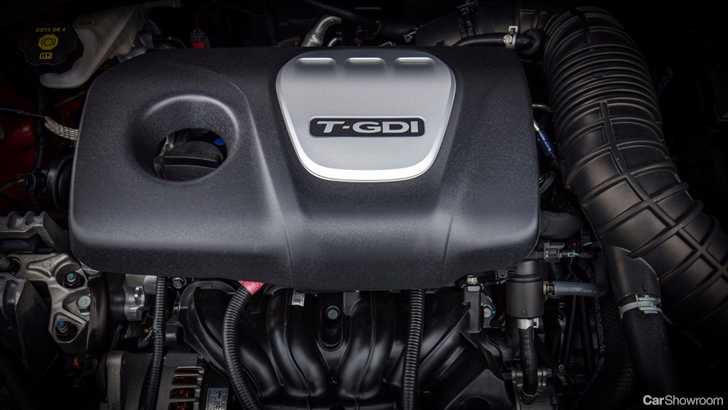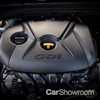The third-generation Hyundai i30 carries a heavy burden upon its shoulders, especially in regard to how it sits in our local market. With the previous version taking the Korean brand to a new level of curbside ubiquity, especially near the end of its life thanks to sharply priced run-outs, the new car aims for bigger and (much) better.
It’s fairly safe to say that it’s already ‘won’ Australia. Though unlike some European makes, the Hyundai name doesn’t carry all that much cachet in the department of perceived quality. But if there’s one brand that’s pulling out all the stops to attempt a sweeping change at how world views a curvy italicised ‘H’, it’s this. Still, it poses a problem for the i30 as its ambitious upmarket climb beckons, and has to meet or even exceed the already elevated competition to be taken as seriously as it wants to be on a global scale.
Add to this the general movements of the buying market favouring SUVs and crossovers over the humble five-door hatch, and the challenges to which the newly installed i30 has to face starts to seem almost insurmountable.
With its posh new European looks, copious amount of chrome, fancier interior, and more tech, a ‘reinvented’ i30 does pose a serious threat to the new Holden Astra, Ford Focus, Renault Megane, and Peugeot 308. But as all of those rival cars use the venerable Volkswagen Golf as a benchmark, how close does the Hyundai come to toppling it and its many pretenders?
Exterior
“The design is smart rather than arresting, and fades into the background when sat next to a new Renault Megane or Peugeot 308.” - Auto Express
Take the badge off the new i30 and there would be very little that stands out about it that indicate it as a Hyundai. Granted, that’s a deliberate move as the man primarily credited with penning it, Peter Schreyer, had been a veteran Volkswagen Group company man prior to his new stint at Hyundai/Kia. A secondary reason would be that Hyundai new design direction hasn’t had enough time to cement itself.
That said, though, the new i30 looks classy in a very polite, elegantly subtle, but a little too straight-laced sort of way. Hyundai’s play to edge the car further into semi-premium territory has resulted in a near identical set of decisions taken by Peugeot with their second-generation 308 and the Opel-developed seventh-generation Holden Astra: more grown up, but a little nondescript.
The front grille is bold and generally stays consistent with this more rounded motif that’s accented by sharp character lines. In SR guise in particular, with its 18-inch wheels, the i30 looks aggressive but tastefully restrained. The kind of look that will make folks on the road wonder what just passed them by and will probably be pleasantly surprised when they learn it’s a Hyundai.
Engine and Drivetrain
“The mid-range SR offers more thrills […]. Low down torque is plentiful and there is a spirited rush to redline as the SR lays down its power through the front wheels. It lacks the synthetic pop and bang of other warm hatches, but its rorty exhaust note still lends it a sporting edge.” - Motoring.com.au
In essence, the engine range available for i30s in Australia revolves around two petrol motors and one turbodiesel. Interestingly, the diesel is the most widely available, a four-cylinder 1.6-litre that generates 100kW and useful 300Nm that’s offered in the entry-level Active and is the sole engine given to the the mid-range Elite and high-spec Premium.
This particular oil burner is relatively smooth and fits nicely with the i30’s vastly improved NVH levels, and the quick 7-speed dual-clutch automatic transmission usually paired with it does allow for more precise manipulation of its narrower rev range. Letting it settle into its most efficient habits, and Hyundai says 4.5-litres/100km is achievable.
A 2.0-litre naturally-aspirated petrol four-cylinder meanwhile, can be had with (and only with) the base Active, a familiar MPI motor available elsewhere in the Hyundai portfolio, that’s good for a linearly delivered 120kW and 203Nm. It offers decent performance and is better enjoyed if mated to the 6-speed manual and allowed to rev high.
Finally, we have the 1.6-litre turbocharged petrol engine that should be easily recognisable from the Veloster Turbo and Elantra SR Turbo. It delivers the same 150kW and 265Nm as the aforementioned pair of hosts, making the SR and SR Premium variants of the i30 pleasantly brisk and quite predictable in its spread of power.
Interior
“The fit and finish, and materials used in the new i30, no matter the variant, are a cut above their equivalent in the previous-generation cars.” - Practical Motoring
Here’s where the i30 will really have to stand up to scrutiny as this is a major reason why buyers so covet the Golf: the quality of the interior materials and how well the confluence of build, style, and comfort manages to congeal.
With the Astra, buyers the world over were surprised at how much nicer of a place it was to spend time in over the previous car. It was mainly the same story when Peugeot unveiled the second-generation 308 hatch the year before. Over the older model, it was a shocking contrast. That sense of rapid improvement does also appear with this i30, albeit less starkly.
Hyundai’s build quality wasn’t in question and objectively, this new model’s material quality does indeed feel a good couple of notches more expensive than the outgoing car, with an interior that’s well laid out, smart looking, rather spacious, and laden with soft touch material. Of course, there are hard plastics that do feel a tad brittle if knocked with sufficient impact, but to the average buyer it will likely not feel like a compromise in tactility.
Step up from the i30 Active and leather seats are fitted along with a steering wheel and gear shift knob wrapped in the plusher material. Rear passenger space is decent but not class-leading, with more than adequate room for 3 pairs of legs and enough vertical space even for taller adults thanks to Hyundai’s discipline at resisting a more sloping roofline. The panoramic sunroof on certain variants seems to not adversely intrude on headroom, either.
Meanwhile, and thanks to the i30’s lengthened body, the boot measures a very healthy 395-litres with the seats down, even managing to upstage the Golf’s cargo capacity. Fold the 60:40 split rear seats, and a very practical 1,300-litres opens up.
Behind The Wheel
“Hyundai's electric-motor-assisted steering is sharp from centre and has three settings, including a sporty mode that adds resistance (too much, at times). Yet it never feels communicative and there's some mid-corner kickback dialled in.” - CarAdvice
Hyundai has had a history of offering cars with a specifically tuned ride and handling to better match the needs of the Aussie buyer - or their specific needs as interpreted by HMCA. Their suspension tweaks have almost always resulted in a better driving experience, a little feather in our cap that other markets won’t enjoy.
This tradition carries into the new i30 too, and while the Active, Elite, and Premium variants all drive rather similarly - which is to say, really quite respectably - the SR and SR premium are the easily most involving over a challenging road. This is partly thanks to its turbocharged petrol engine that the other grades miss out on, delivering swift acceleration out of bends while the firmer suspension keeps the car flat for longer.
With 150kW, it would have no trouble being classified as a hot hatch but the truth of the matters is that the i30 SR often lacks that same freneticism. It’s a tempered kind of performance, which is a sentiment previously attached to the Veloster Turbo. Overall, though, it’s still fast enough, and, importantly, a markedly better steer than before, even in base form, feeling managing to feel solid and sufficiently playful. Hyundai should be proud.
Safety and Technology
“SmartSense kit is not yet available for the Active, but should be offered as a pack by the end of 2017. It's worth noting, too, that the manual cars can't be fitted with SmartSense, which means the cheapest car in the range will miss out altogether.” - CarsGuide
While the ANCAP safety rating is a very reassuring 5-stars, it should be noted that the score was based on crash test results carried over from the Hyundai Elantra, which both Hyundai and ANCAP are confident is representative of the 2017 i30 as both cars share key structural components and safety gear.
Naturally, it’s not as evergreen as having a proper i30 crash tested and coming away with some high marks, but given how many pre-collision features this Hyundai offers, you can rest easy knowing that you’re in a very safe machine.
Seven airbags are standard and so are the usual list of mandatories such as electronic stability control (ESC), rear parking sensors, and a rear view camera. Access to the Hyundai Sensing suite becomes available even in the lower-midrange Elite variant. This adds Autonomous Emergency Braking, Blind Spot Monitoring, Forward Collision Warning, Rear Cross Traffic Alert, and Active Cruise Control.
Meanwhile, the infotainment category is well sorted on every i30, with an 8-inch central touchscreen offering bluetooth, built-in satellite navigation and support for Apple CarPlay and Android Auto. It’s a fairly high resolution panel with an intuitive interface, though aesthetically blemished by some very thick bezels.
Verdict
Of the popular mass market five-door hatchbacks, Hyundai’s push toward a more upmarket audience is similar to two notable i30 competitors to have blazed this fresh trail: the Peugeot’s second-generation 308, and the seventh-generation Holden Astra.
The real question is whether the Korean effort is done just as well or even better? The answer, regrettably, isn’t as binary. Make no mistake, the i30 is now a much better car than the version that came before. In every aspect, it’s a big improvement. It’s also now more desirable, the cumulative effect of a classier exterior and posher cabin, as well as being rather fun to drive and quite practical.
All the boxes seem to be ticked, and a decade ago this would have been enough to clinch it as overall class leader. In 2017, though, few cars err on the wrong side of good, and standing out requires a manufacturer to go above and beyond, cultivating a reputation that buyers come back to. Hyundai may yet achieve this with the i30, and in record time, but right now it’s too early to call.
So far as creating a true alternative to the Volkswagen Golf, Hyundai’s effort is successful, and genuinely worthy of applause. But the world already has a Golf, and rivals such as the 308 and Astra have also set similar benchmarks. And unfortunately for Hyundai, they have also achieved them, and did so sooner.
Practical Motoring - 4/5 - “The new Hyundai i30 not only looks better and more premium inside and out, but it’s better to drive and better equipped than ever before. With a solid range of cars to choose from, strong engines, good pricing and an excellent active safety system, the new i30 is likely to be the dominant force in the small car segment, indeed I'd go so far as to say that as a complete package it's the new small car benchmark.”
CarAdvice - 8/10 - “there's no doubt the i30 SR Premium blends comfort, nimble handling, decent engine punch and downright cabin luxury in a way that few other cars around this price can. We're no longer even pleasantly surprised by the Korean brand. We demand excellence, and here Hyundai has delivered. Go look for yourself.”
Auto Express - 3/5 - “The all-new Hyundai i30 has come on leaps and bounds over its dreary and uninspired predecessor, but still fails to ignite the imagination or stir the soul. It’s well built, refined and economical, but in a fiercely competitive class that features cars like the stylish Renault Megane and excellent [Holden] Astra, it remains a rational rather than an emotional family car choice.”
Motoring.com.au - 83/100 - “The i30 is a seriously good car, and deserves its place among Japanese and German contemporaries. Time will tell whether the i30 can mix it as Australia’s best-selling passenger car. What’s already clear is that this “DNA” vehicle has set the performance for a new wave of sophisticated and refined products. It paves the way for a promising chapter in the Hyundai story.”
CarsGuide - 8.3/10 - “In a market that's absolutely saturated in choice, Hyundai has delivered a car that will reward and delight even those people for whom a car is merely another device. The i30 is a perfect example that you don't always have to spend big bucks to buy something that's still a little bit special.”
What Car? - 3/5 - “The Hyundai i30 is worth considering if you value practicality, ease of ownership and minimal running costs above image and speed.”
WhichCar - 4/5 - “Hyundai’s stylish new-generation i30 hatchback is loaded with equipment, including great smartphone integration and – on more expensive versions – a broad active-safety suite that includes auto braking. Handling and comfort are good, and among three engine options is a very strong turbo-petrol.



































